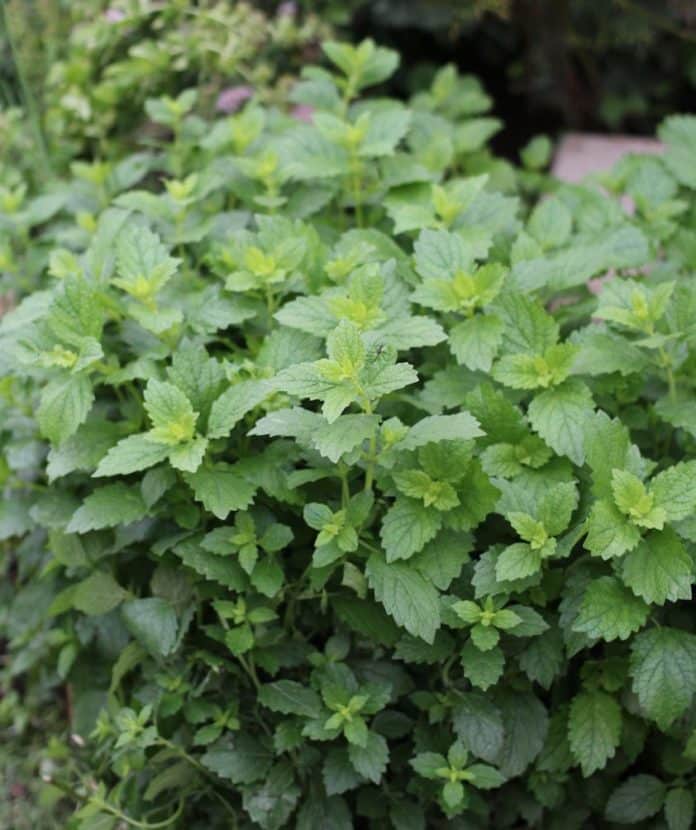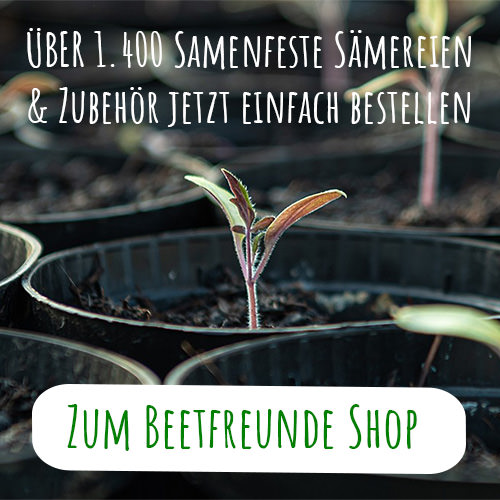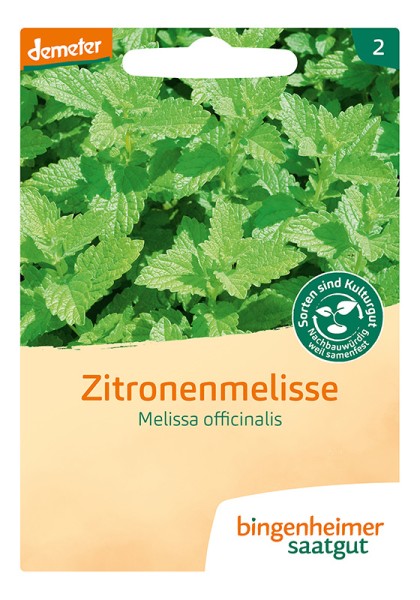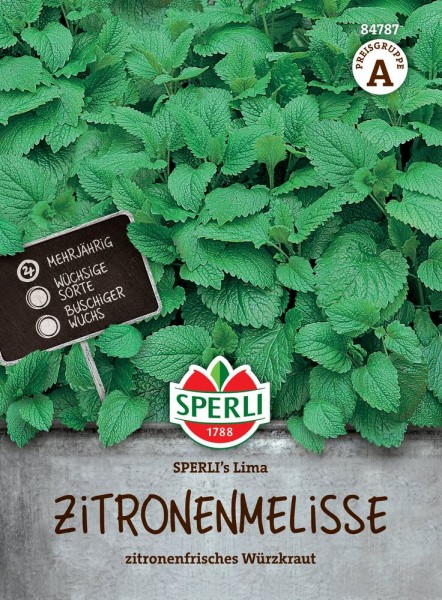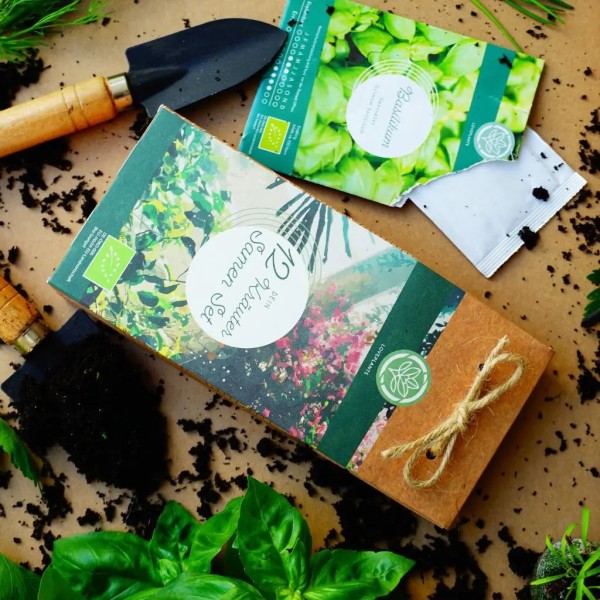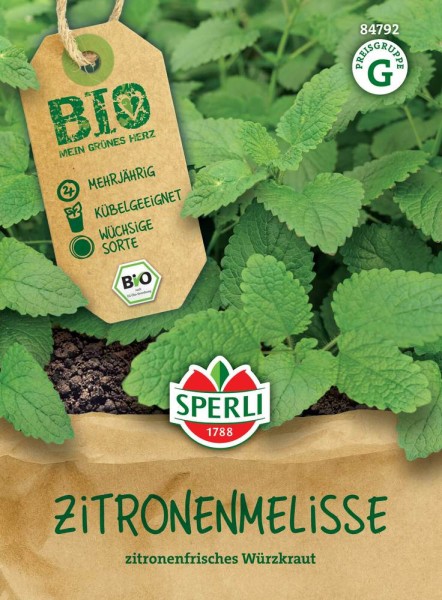The dream of many amature gardeners is to grow their own lemon tree. Unfortunately, the exotic fruit is not easy to grow in the garden in our latitudes. Fortunately, you don’t have to do without the fresh, tart aroma in the bed and kitchen. Lemon balm is a great herb that can be grown here without any problems. There are also two other reasons why you should definitely grow it in the garden and on the balcony: lemon balm is a nectar-rich bee pollenator and an old medicinal herb. Its beneficial healing properties even made it the medicinal plant of the year in 1988!
Lemon Balm Varieties
Lemon balm (Melissa officinalis) is often simply called balm. It originates from the Mediterranean region. In contrast to other herbs, the number of varieties of lemon balm is manageable. Classic lemon balm can reach a height of up to 90 centimetres with good care and an ideal location. Its egg-shaped, pointed leaves have a serrated edge and smell wonderfully of fresh lemon – hence its name. The leaves of the Crete melissa (Melissa officinalis ssp. altissima), on the other hand, smell more fruity and more like limes. A spectacular eye-catcher is the variety with the nickname “Aurea”; its green leaves turn golden from May onwards.
Planting and Growing Lemon Balm
You can grow lemon balm in the garden bed or in a planter on the balcony or terrace. Young plants can easily be grown from seeds, however, they usually need temperatures of at least 20 degrees Celsius to grow. It is best to start lemon balm on the windowsill from February to March. Make sure that you do not cover the seeds with soil, but sow them flat in the seed bed and press lightly on them. Lemon balm is averse to light after planting. If they are covered with too much soil, the seeds open rarely or not at all. Otherwise, you should be able to see the first green after about three to four weeks. For the seedlings to grow healthily and compactly, they need sufficient light and moisture. From May onwards, you can plant the young plants outdoors as soon as there is no more ground frost to be expected. This is usually the case from the middle of the month after the ice saints. If you prefer to sow the lemon balm directly in a bed or pot, now is also the right time.
Vegetatively Propagating Lemon Balm
If you already have lemon balm in your garden, you can propagate it with cuttings or from the old plant. These forms of vegetative propagation have a decisive advantage over sowing: the new plants have the same characteristics as their mother plants. It is therefore best to use a healthy and particularly luxuriant lemon balm plant, from which you would like to have more plants. For cuttings, cut young shoots in early summer. Remove all leaves except the upper pair of leaves and plant the shoot in growing soil. Don’t forget to water well!
To multiply the lemon balm by division, cut the rootstock with a sharp knife in spring. Make sure that the small lemon balm not has young shoots as well as roots. Now plant where you want them in the garden and water them thoroughly.
Location and Care
In order for them to best develop their refreshing aroma, it is best to place lemon balm in a sheltered location with plenty of sunshine. If there is no sunshine in your garden, no problem; the lemon balm can also cope well with semi-shade. Basically, the soil should be nutritious, warm and permeable. Lemon balm does not like to be waterlogged, as its roots will rot. Older plants should therefore only be watered moderately. The first year is an exception: the young plants are often even happier when you water them more vigorously. Lemon balm is generally considered to be very easy to care for, robust and not susceptible to diseases and pests. In the warm months, it grows quickly, so you can harvest up to four times in the second year.
From June to August, the plant forms small white to light purple flowers in the leaf stems, rich in nectar and therefore popular with bees. Unfortunately, the leaves lose their great aroma after flowering, and you have to wait until next year before you can harvest again. You don’t have to plant new plants. Lemon balm is hardy, persistent, sprouts fresh again in spring. It also produces many seeds and sows itself quickly.
Harvest & Preservation
In the first yea,r you can harvest young leaves and lemon balm shoot tips in August, in the second year as early as May. The leaves are most aromatic before flowering, when they contain the most essential oils. Unfortunately, they do not taste as good afterwards.
Lemon balm not only adds a refreshing note to savoury dishes, salads, dips and sauces. It also gives desserts, bowls, lemonades, and tea a lemony aroma. Here you can find a recipe for a delicious sorbet. It is also appreciated for its healing properties. Melissa is said to be relaxing and antispasmodic; it strengthens and calms nerves. It is therefore used for gastrointestinal complaints and insomnia. For the perfect taste experience, it is best to use lemon balm fresh. You can also preserve it by drying it in a dark, dry place or freezing individual leaves. Don’t worry, when dried, lemon balm quickly loses its fragrance and aroma, but retains its most important ingredients.

